Projects of tanks of Polish fantasy Stanislav Lem
Hard to believe, but two months after the liberation of Lviv by the Soviet troops in 1944, the future author of the famous novel Solaris, in which Andrei Tarkovsky shot the equally famous film with Donatas Banionis in the main role, offered the Soviet military in a voluminous letter in Polish his vision of the creation of new tanks. In this case, these tanks were diverse: from huge monsters, which he called "land armadillos" or "battleships", to small tankettes. Naturally, none of these projects was properly worked out; nevertheless, Lem did not have the appropriate education and experience, but in terms of stories These works of the future famous writer, of course, are of great interest.
Stanislav Lem was born on September 12 1921 of the year in Polish Lviv. He was born in the Jewish family of an otolaryngologist, a former doctor of the Austro-Hungarian army, Samuel Lem and Sabina Waller. In 1939, the future writer received a certificate of secondary education, in the same year Lviv became part of the Ukrainian SSR. At first, Stanislav Lem wanted to enter the Polytechnic Institute, but he was denied training because of his bourgeois origin. And only in the 1940 year, due to his father's connections, he managed to enter Lviv University in the department of medicine. Lem did not feel any enthusiasm about this, since at that time he was more interested in equipment and technology.
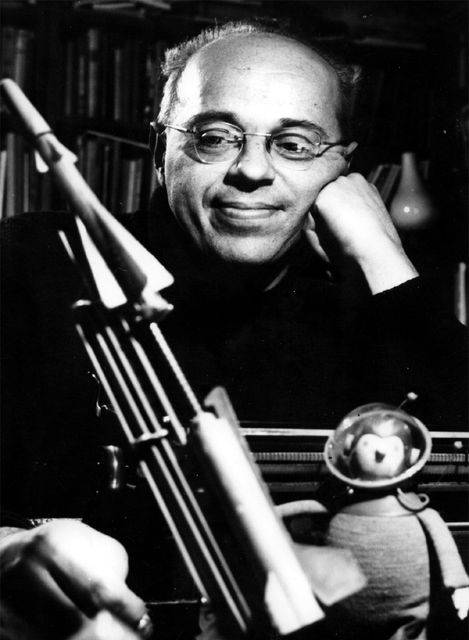
By the time the Great Patriotic War began, Lem was still studying medicine in Lviv, the occupation of the city by German troops had halted this process. Unlike many Lviv Jews, the writer's family managed to survive these terrible years. The family lived on forged documents and was able to avoid deportation to the ghetto, all other close relatives of the Lem family, who were in Poland, died during the Second World War. At the same time, during the war years, Stanislav Lem, along with his father, were members of the Resistance movement, while at that time he worked in a field that was far from medicine - a welder and an auto mechanic. In particular, he worked as a welder during the cutting of numerous damaged and destroyed armored vehicles, which remained after the fighting for the city in the summer of 1941.
With such uncomplicated methods, he learned the basics of tank construction, and only, perhaps, by observing numerous trains with German military equipment that went through the city further east, to the millstones of the front. Later, the future writer recalled: "Waiting for the liberation of the city from the Germans, I strained all my strength in one direction, in order to develop new or improve existing combat means based on the incomplete data and observations received by me."
The Red Army liberated Lviv from the Nazi invaders 27 July 1944 of the year. Two months after that, Stanislav Lem sent his views on the construction of various types of armored combat vehicles to the USSR Commissariat of Defense. These documents are preserved in the Central Archive of the Ministry of Defense of the Russian Federation. A letter from the then unknown 23-year-old Stanislav Lem from Lviv entered the State Defense Committee 17 in October 1944, it was written in Polish and was entitled “Projects of technical innovations in the defense industry”. In his message, Stanislav Lem described the horrors of the war that he had to endure and which he witnessed in Lviv occupied by the Germans. That is what prompted him to design new types of weapons to fight the enemy.
Lem offers very few people interested in Moscow. Before the start of the war, the USSR already had its own unsuccessful experience in creating multi-turreted “battleships”. From 1933 to 1939 years in the USSR produced five-turreted heavy tank T-35. At the time of its creation, it seemed to Soviet designers that a similar machine, firing in all directions from three guns and machine guns 5-7, could create around itself a sea of fire. However, in practice, this over-heavy monster with huge dimensions and insufficient booking by the beginning of the war became an archaic and outdated machine, from which there was no benefit. Many T-35 tanks were abandoned in the very first days of the Great Patriotic War due to technical problems that arose with them and the impossibility of carrying out their evacuation. In any case, Stanislav Lem did not wait for an answer to his letter. And in 1946, he moved from Lviv to Krakow, leaving the USSR forever.
Brunettes of Stanislav Lem opened in his article for the site worldoftanks.ru Yuri Bakhurin, who met with archival documents stored in TsAMO RF. There is nothing surprising in the fact that on the site of the most popular tank game in the world, tanks became interested in the projects of the famous Polish science fiction writer.
The very first project in the letter of Lem was the project of creating a “large-size tank”. It was a ten-meter land monster. The project surprised first of all with the running gear. Stanislav Lem believed that due to the presence of four independent tracked trucks, his combat vehicle would be able to move freely in any, even rugged terrain. Such a running device, in his opinion, should have allowed the tank to be shipped through the ramparts, the ruins of brick walls, and anti-tank ditches. The future writer described his creation as a “battleship” or “land armadillo”. He gave this name to his brainchild not by chance. The tank was multi-turreted. In addition to the front gun turret, he also had a smaller rear turret with a paired small-caliber automatic anti-aircraft gun. In the four corners of the tank there were additionally machine-gun turrets, the sectors of fire of which mutually overlapped. According to Lem, such a tank would be reliably protected from attacks from the ground and air. He would not be afraid of either infantry or enemy aircraft. Stanislav Lem did not specify the caliber of the main gun mounted on the tank, but it could be a very powerful system in caliber up to 155 mm.
The combat mass of such a "land armadillo" was supposed to be about 220 tons. If someone now thinks that the future science fiction is completely insane, one can only say that in Hitler's Germany, much more technically educated and gifted designers suffered from gigantomania. At the same time, gigantic tanks in Nazi Germany were not only designed, they were built there. Lem himself did not paint the reservation of his brainchild, but described the concept of protecting his tank. In his opinion, the armor of the tank had to be adapted for the simplest mass production. “This would slightly increase the mass due to the worse quality compared to rolled armor, but it would allow producing armor in quarters or octopuses of the total volume, ensuring the absence of complicated installation,” wrote Stanislav Lem. Details of the armor of the tank had to be rounded, with cylindrical external contours in the frontal and side projections, as well as in the stern of the tank.
The inventor from Lviv sought to ensure maximum protection of his “battleship”, it should have been ensured not only by booking a tank, but also by “retinue” - small combat vehicles. Directly behind the "land armadillo" in the letter of Lem was a description of two projects of tankettes. The first project was called "Wedges A". It was a fighting machine with a length of 2 meters, a width of 1,3 meters and about the same height. The device tanketki was very simple. The reservation was to consist of one belt of rolled armor, which was bent and pressed as necessary. The front of the body "Tanketki A" was supposed to get a beveled shape that would provide maximum strength and stability of the armor. The gasoline engine had to set the wedge in motion. The crew consisted of only one Red Army man, who was located in a combat vehicle in a reclining position. He had to not only drive a car, but also be controlled with one large-caliber or two conventional machine guns mounted in a rotating turret. He had to conduct a review through the front and two side viewing slots.
"Type A wedge, rather, even a mechanized machine-gun nest, has the following task: to cover a heavy type tank from frontal attack and destruction weapons in front (disc mines, anti-tank missiles, etc.), ”Stanislav Lem pointed out in his letter. At the same time, he provided for one more function for the type A tank shoes: setting smoke screens on the battlefield. Placing special tanks containing smoke-generating substances in tankettes, it would be possible to achieve reliable camouflage and cover of troops in certain sectors of the front. Finally, thanks to the presence of the support and handles that were located at the stern, the “Tanketka A” could take on the armor of one Red Army man. Several hundred of these light combat vehicles could quickly carry infantry in the amount of up to one battalion.
The type B wedge, proposed by Lem, was also single and equipped exclusively with machine guns. But in this case, the future writer focused on reducing the height of the combat vehicle, which should have made it difficult for enemies to aim at it. "Tanny B" had a spindle shape and a very low silhouette. Its height, according to the author, should not exceed 70 cm. The device of the track shoes allowed the machine not to cling to the hull for uneven ground, which increased maneuverability. “The shooter and the driver in one person, lies, or rather even hangs on the belts in a kind of steel“ coffin ”, watching the battlefield through periscope viewing instruments,” noted Stanislav Lem.
Inspection devices should be located in front of the fighter. He had to drive the "Wedge B" with the help of pedals located in the legs, as well as with the clutch and gear levers. The front part of the frame protruded forward, and a freely rotating guide roller of the tracks was located on it. Thanks to such a solution, the “Slipper B” could, according to the author’s plan, freely overcome craters and ditches. The type B wedge also relied on a gasoline powerplant, but with horizontally placed cylinders and air cooling due to the air being drawn in from below. The future science fiction writer emphasized that the “Tanketka B” must be very fire resistant, he could see resistance against enemy fire. If the combat vehicle could be set off, the fighter should have quickly removed the machine gun from it, left it and started fighting again, but already with an infantryman.
In addition to the project of a gigantic tank and two small tankettes, the letter contained other ideas of the author. In particular, he proposed to create a self-propelled anti-aircraft gun on the basis of a car with a low armored body. Then came the presentation of ideas to create a whole anti-tank missile system. He also indicated in the letter that he had ideas and sketches of assault guns, but these materials were no longer included in the letter.
Despite the naivety of work, it felt the desire of a person who survived the occupation, to somehow help in the fight against the enemy. And the flight of fantasy, which made Stanislav Lem a famous writer, whose books millions of people are reading today, has not disappeared anywhere from his first unpublished “fantastic work”.
Information sources:
http://worldoftanks.ru/ru/news/pc-browser/12/stanislaw_lem_tank
http://www.istpravda.ru/news/368
http://kino-expert.info/people/stanislav-lem.html
Open source materials
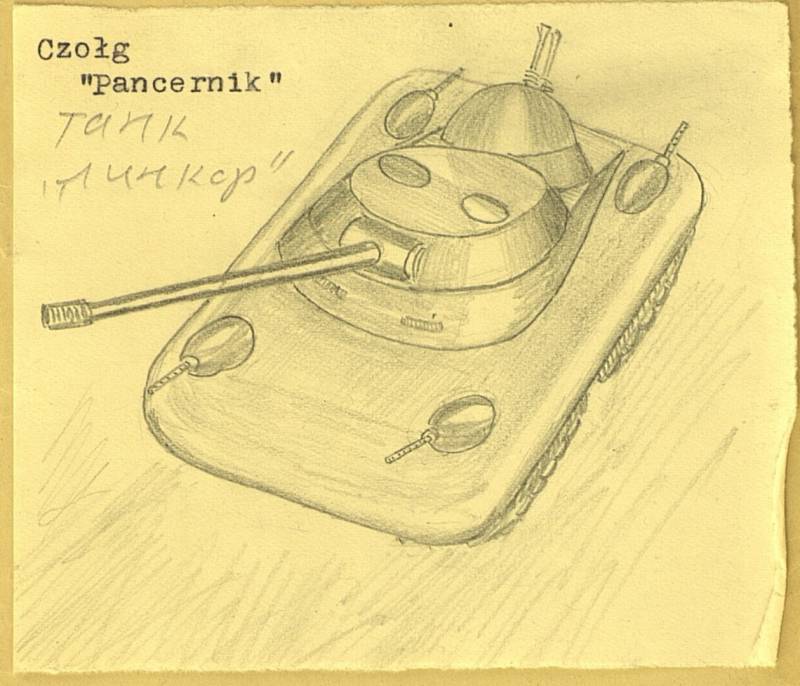
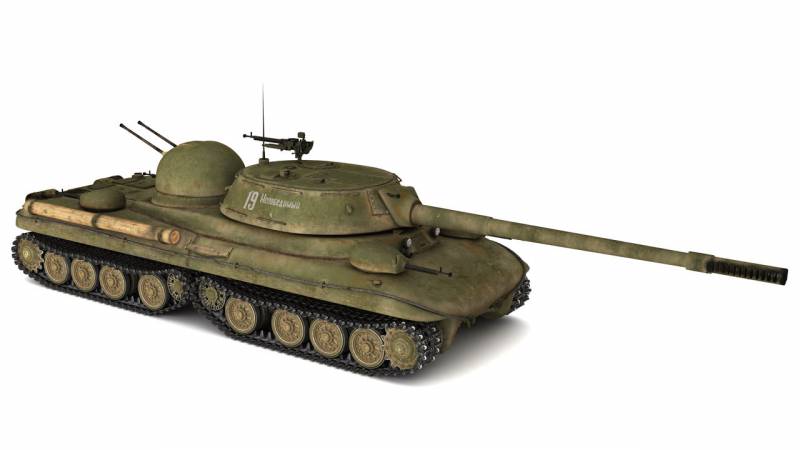
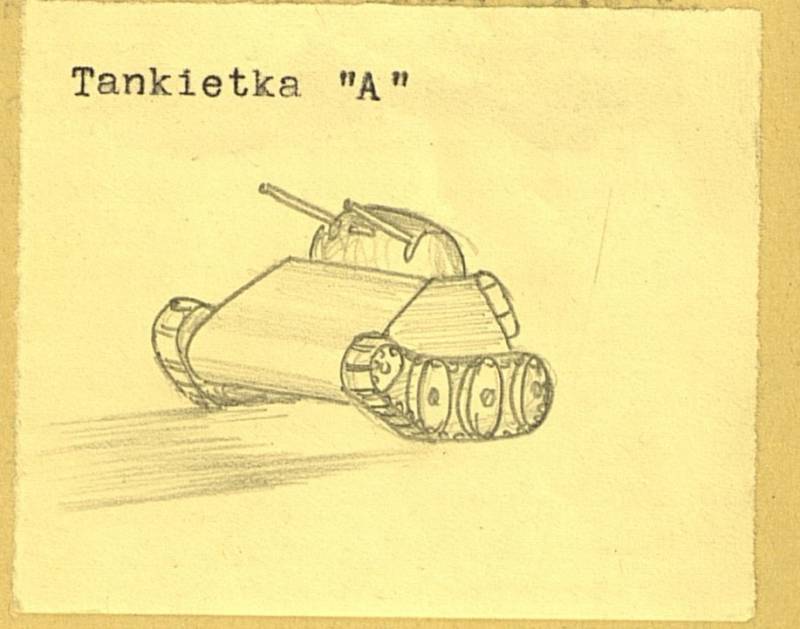
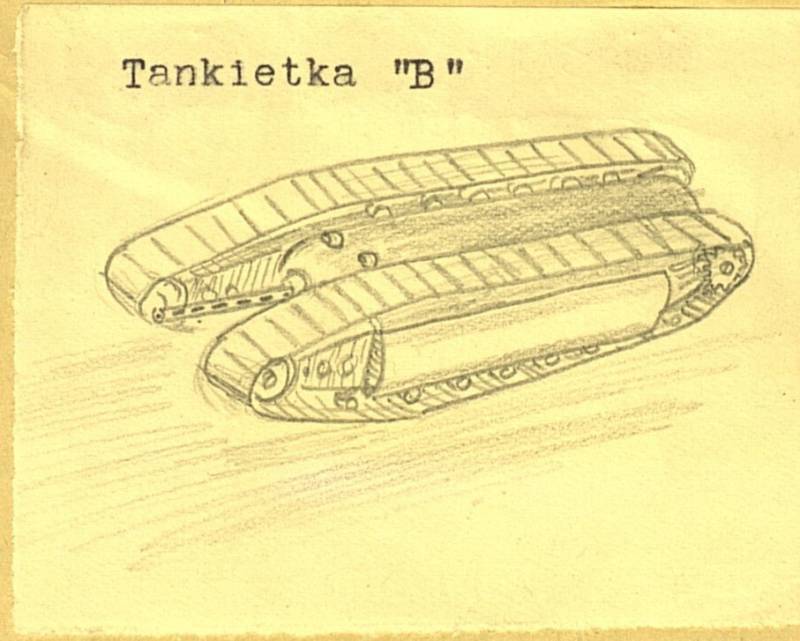
Information